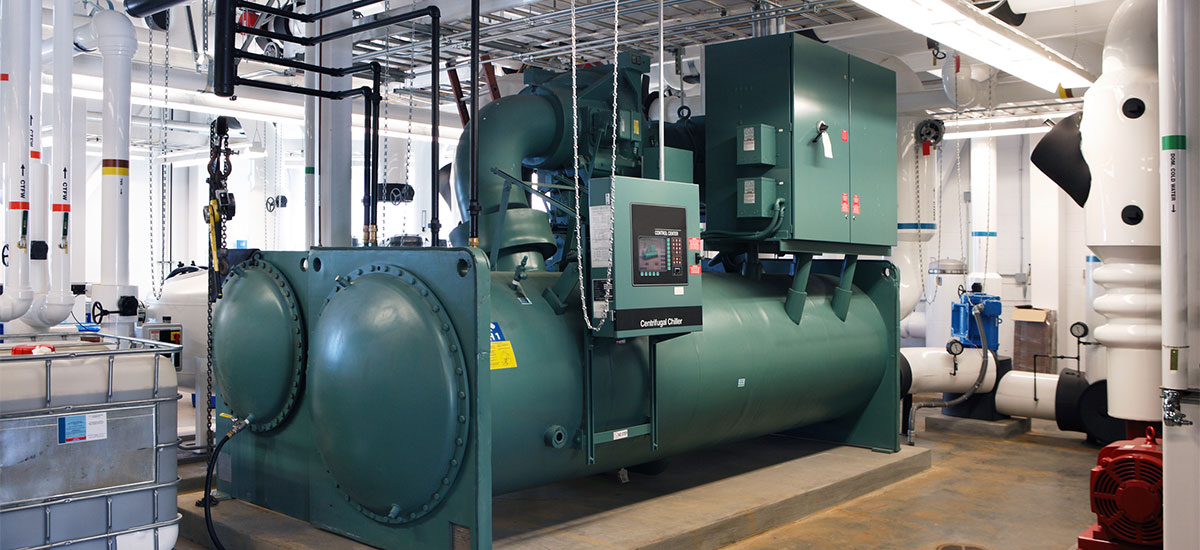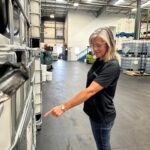
Understanding Problems in Closed Loop Systems
When treating a closed loop cooling system, you may encounter some of the same issues or problems that you have experienced when treating cooling towers. Closed loops can experience problems that rob efficiency and destroy equipment through corrosion, scale, biological growth and fouling. The initiation of these shared issues may be different between a closed loop and a cooling tower system, but the water related problems to be addressed are fundamentally the same.
Closed loop systems are “closed” to the atmosphere and the heat exchange is facilitated by heat exchangers where the closed loop water does not mix with the media or water that is being heated or cooled. By design they are less vulnerable to outside contaminants caused by environmental exposure. There is no evaporation which conserves water. The water chemistry tends to be less variable than a cooling tower over time.
However, you must not overlook or become complacent with the inherent stability of a closed system because problems can arise. Closed loop systems can become “out of balance” if ignored.
The problems with closed loop systems
The harm caused by corrosion is well known. Metal wastage will cause leaks, and generate high levels of metal oxides that lead to deposition and fouling leading to system repairs and replacement expenses.
In closed loops, corrosion is a greater concern since the corrosion products continually build up since there is no blowdown. Particulates generated by corrosion can lead to deposition. The deposition can further exacerbate corrosion by providing locations for the under deposit corrosion mechanism.
Dissolved oxygen corrosion is also a contributor to corrosion in a closed system. Make up water, open tanks and system vents can transport oxygen into the closed loop.
The continual fouling of heat exchange surfaces and system piping with corrosion byproducts will reduce system efficiency and performance and will result in higher operating and equipment costs. High iron and copper levels can also impede the efficacy of some treatment chemicals.
Mineral scaling can develop in a closed systems due to the initial fill water and subsequent make up water used to replace any water losses from equipment maintenance or leaks. Temperature, pH and retention time and play a role in the precipitation of dissolved solids.
Fouling can occur due to contaminants left during initial construction or when making system additions. Fouling particulates also provide surfaces for microbial growth and the formation of biofilm, further reducing system efficiency. Growth of biofilm, in turn, can lead to microbiologically influenced corrosion (MIC), creating a contamination cycle that can be challenging to escape. Microbes can consume many treatment chemicals. This not only reduces the active inhibitor level but can convert the inhibitors into corrosive by-products (for one example see our blog on nitrite).
Organic contamination in closed loop systems can come from process leaks, oils or the breakdown of glycols, biocides or treatment chemicals. The organics can be a source of nutrients for microbes in the closed system.
Finding the right treatment for your closed loop system
The best water treatment program mitigates all of the above. Clearly, treating for one single issue is not sufficient to control them all.
Good closed loop system maintenance begins with a thorough system survey, including water analysis and an understanding of previous and existing water treatment history and problems. Then, a proper program can be designed and established that may include cleaning the system and adding a side stream filtration system before initiating the chemical treatment program.
After the proper chemical treatment program has been implemented, a regularly scheduled monitoring program needs to be established and followed.
Most of all, the right treatment program will be specific to your system. At QualiChem, we have the expertise to identify the issues and develop a program to resolve and control them.
Contact us today to learn more about the right chemical treatment plan for your closed loop system.



